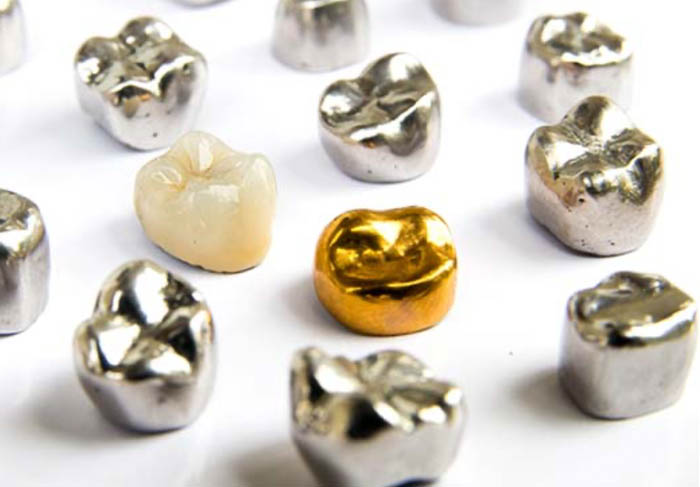Metal removal
Metal removal
biological dentistry

Metal removal in the bio dental practice
Amalgam was a popular material for dental fillings for a long time.
Today, many patients come to the practice with the desire to do without mercury-contaminated amalgam or to get rid of existing fillings through amalgam removal and/or metal removal.
However, other metals are also frequently used in dentistry – such as gold or metal compounds with silver alloys.
The interaction of metals with each other and with the body can result in dangerous health risks.
Metal dental fillings
What dangers can metal dental fillings
entail?
In biological dentistry, the focus is on avoiding metals that can have toxic effects on the body. Influences such as food and drink, saliva and mechanical action cause corrosion and wear on the metals in the mouth. Metal ions are released in the process. Their interaction – for example with dental fillings made of different metals or with the body – can lead to functional complaints of the organs.
Chronic diseases can develop, including dementia, neurodermatitis and cardiovascular diseases. Last but not least, metals in the oral cavity put a strain on the immune system: it recognizes the metal ions as foreign bodies and produces antibodies against them, which manifests itself in allergic reactions or a generally weakened immune system. A comprehensive detoxification can be helpful here, but is of little long-term benefit if the cause of the physical complaints – namely the metal – remains in the body.
Have metals completely removed by a bio dentist
Bio dentistry always tries to work metal-free. Existing fillings made of amalgam, gold and the like can be eliminated as part of a professional metal removal in the bio dental practice.
The principles that are important here are similar for all amalgam removal procedures. This means that the focus is on the gentle removal of metals without toxins entering the body and subsequent detoxification. After metal removal, smaller defects in the tooth substance are closed again by the biologically working dentist using biocompatible filling materials. Larger defects are usually treated with metal-free crowns. The material of choice here is usually zirconium, which is very well tolerated and does not cause any interactions. Following amalgam removal or the removal of another metal by a bio dentist, a comprehensive detoxification of the body is recommended so that it can completely get rid of the toxins. Your bio dental practice will be happy to advise you on this.
